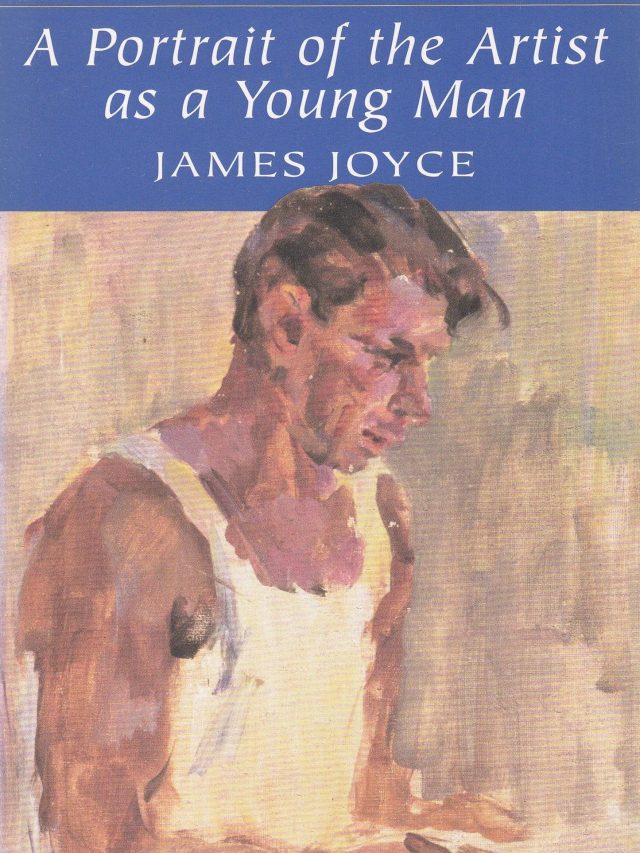A Portrait of the Artist as a Young Man
Art has long been celebrated as a vessel through which individuals express their innermost thoughts, emotions, and experiences. In literature, the artistic journey often serves as a poignant reflection of the human condition, offering readers insights into the complexities of self-discovery and self-expression. One such masterpiece that intricately weaves the journey of artistic exploration is “A Portrait of the Artist as a Young Man” by James Joyce. Published in 1916, this semi-autobiographical novel not only captures the essence of a young man’s tumultuous journey towards artistic self-discovery but also delves into the broader contemplation of the artist’s struggle to define their identity within the confines of societal norms and expectations.
The novel “A Portrait of the Artist as a Young Man” by James Joyce presents an intricate portrayal of the protagonist’s evolution from a constrained individual to an artist who rebels against societal norms, culminating in his quest for authentic self-expression.

In this semi-autobiographical masterpiece, James Joyce artfully constructs the transformation of Stephen Dedalus from a young boy confined by religious and societal conventions into a mature artist who embraces his unique voice and perspective. Through a meticulously crafted narrative structure, the novel traces Stephen’s trajectory from innocence to enlightenment, mirroring the broader journey of artists as they navigate the labyrinth of their own creative identity.
Stephen’s journey begins with his upbringing in a devoutly Catholic environment—a crucible of moral and religious teachings that influence his early thoughts and actions. This initial stage of life is crucial in shaping his identity, as the external pressures of religion and family attempt to mold him into a conformist individual. This aspect of Stephen’s evolution reflects the common struggles artists face, where societal expectations and familial pressures can thwart the emergence of their true artistic essence.

As the narrative progresses, Joyce portrays Stephen’s intellectual awakening as a turning point that sparks his rebellion against these constraints. Through his immersion in literature, philosophy, and aesthetics, Stephen’s horizons expand, and he questions the very foundations upon which his identity is built. This stage mirrors the artistic journey of self-discovery, where exposure to diverse influences allows creators to break free from their mental shackles and explore uncharted territories of thought and expression.
Stephen’s rebellion intensifies as he enters adulthood, marked by his defiance of societal norms and his assertion of individualism. His growing dissatisfaction with religious dogmas and political fervor signifies his journey’s maturation phase—a period when artists begin to challenge the status quo, seeking to transmute their inner struggles into creative statements that resonate beyond themselves. Stephen’s self-imposed exile and emotional turmoil mirror the isolating yet liberating nature of artistic pursuits, where creators often find themselves on the fringes of societal norms.
Ultimately, Stephen’s journey culminates in his quest for authentic self-expression—an ascent to the zenith of his artistic transformation. Through introspection, self-examination, and creative introspection, he transcends the confines of his past to embrace the full scope of his unique perspective. This zenith symbolizes the artist’s triumphant realization of their distinct voice and the culmination of their internal struggles, reflecting the very essence of the artistic journey itself.
In the end, “A Portrait of the Artist as a Young Man” serves as a microcosm of the broader narrative of artistic self-discovery. Through Stephen Dedalus’s evolution, James Joyce illuminates the profound challenges and triumphs artists undergo as they navigate the intricate labyrinth of identity, rebellion, and self-expression. The novel stands as a testament to the perpetual struggle faced by creators—past, present, and future—as they endeavor to carve their own path, defy societal norms, and share their unique perspectives with the world.
I. Shaping Identity: Early Influences and Conventions
A. Childhood and Upbringing
The novel introduces us to Stephen Dedalus as a young boy embedded within a devoutly Catholic society in early 20th-century Ireland. His family, teachers, and religious leaders collectively exert a profound influence on his early development. This section highlights the powerful role that external forces can play in shaping an individual’s identity, often laying the foundation for future struggles between self-expression and conformity.

B. Role of Religion and Family
Stephen’s early life is permeated with religious teachings and familial expectations that define his actions, thoughts, and perceptions. His inner turmoil emerges as he grapples with the dissonance between his personal inclinations and the dogmas of his faith. This internal conflict serves as a microcosm of the broader tension between artistic expression and societal norms, where creators are frequently confronted with the challenge of reconciling their inner worlds with external expectations.

C. Navigating Societal Expectations
As Stephen matures, the societal norms and values that surround him become increasingly constrictive. His burgeoning artistic inclinations and intellectual curiosity clash with the rigid conventions of his environment. This section portrays the universal struggle artists face when they find themselves at odds with the prevailing order, echoing the friction between the creative urge and the demand for conformity.
II. Intellectual Awakening: The Quest for Artistic Purity
A. Curiosity and Exploration
Stephen’s intellectual curiosity blooms as he becomes increasingly immersed in literature, philosophy, and the arts. This exposure expands his horizons and introduces him to alternative perspectives beyond his insular upbringing. This phase mirrors the artist’s early encounters with different forms of art, literature, and thought, which often become catalysts for questioning established norms and seeking new avenues of expression.
B. Challenging Religious Dogmas
As Stephen delves deeper into his studies, he confronts the incongruities and limitations of the religious teachings he has grown up with. His questioning of religious dogmas reflects the internal conflict that artists often experience—evaluating societal constructs and seeking their own truths in the pursuit of a unique artistic vision.
C. Desire for Artistic Purity
Stephen’s exposure to aesthetics and beauty leads him to desire artistic purity—a fervent yearning to strip away the superficial layers of society and religion in search of an unadulterated creative expression. This mirrors the artist’s yearning to distill their authentic voice from the noise of external influences, seeking to capture their most profound emotions and thoughts on canvas, paper, or stage. (to be continued)

Contributor






